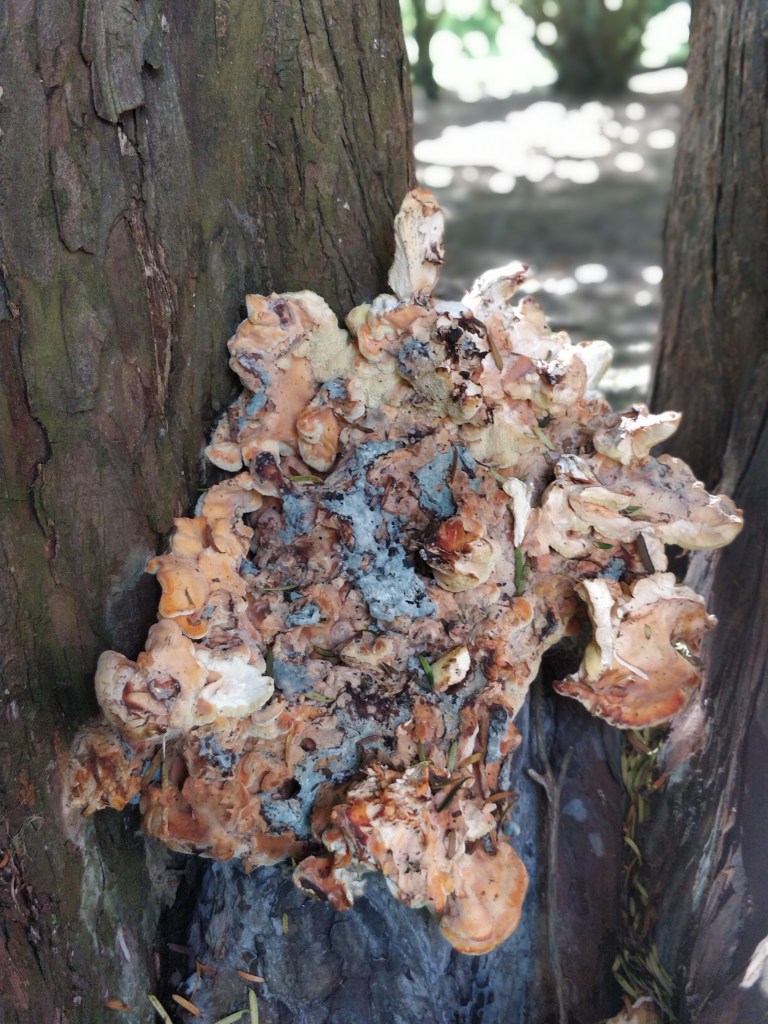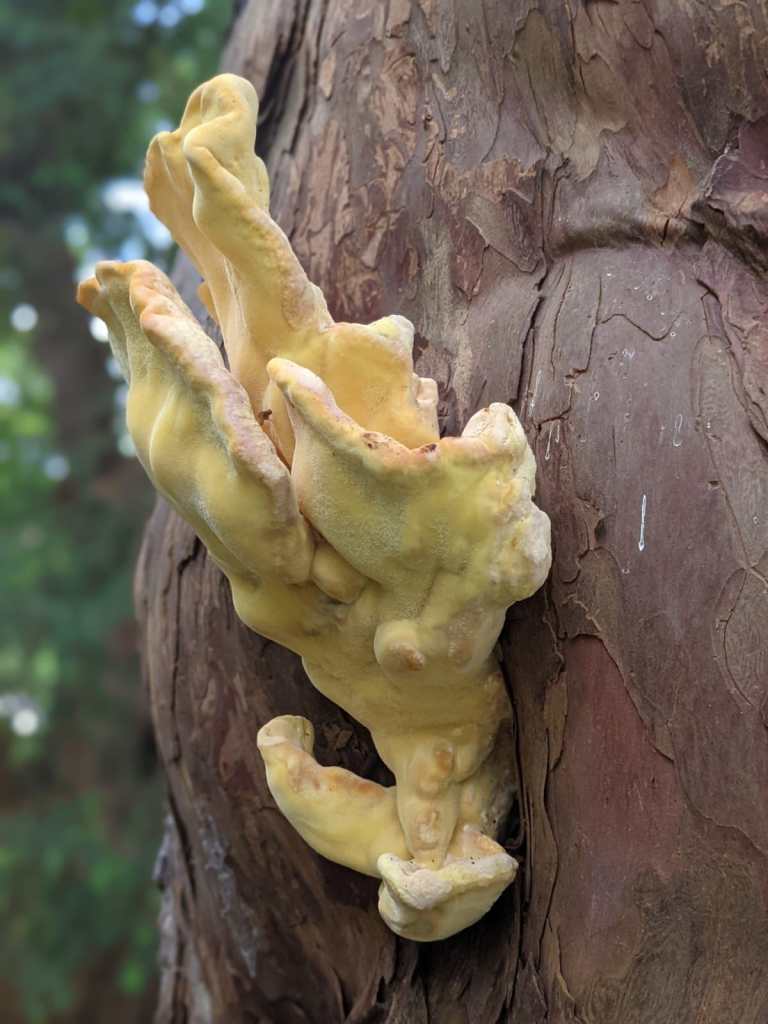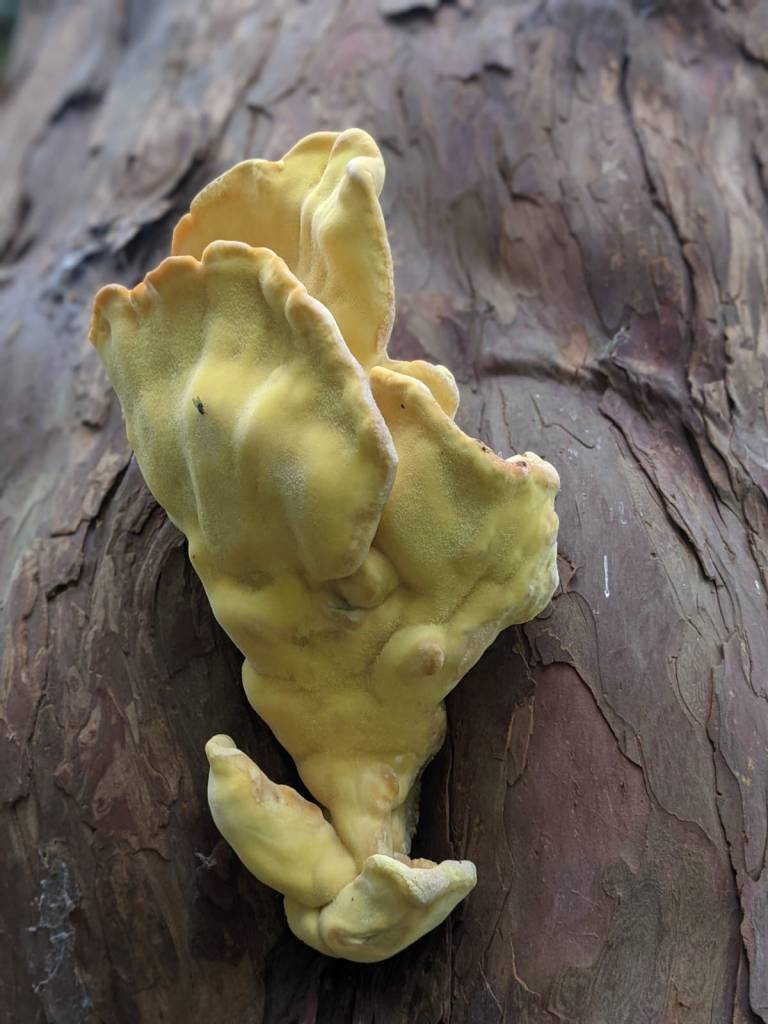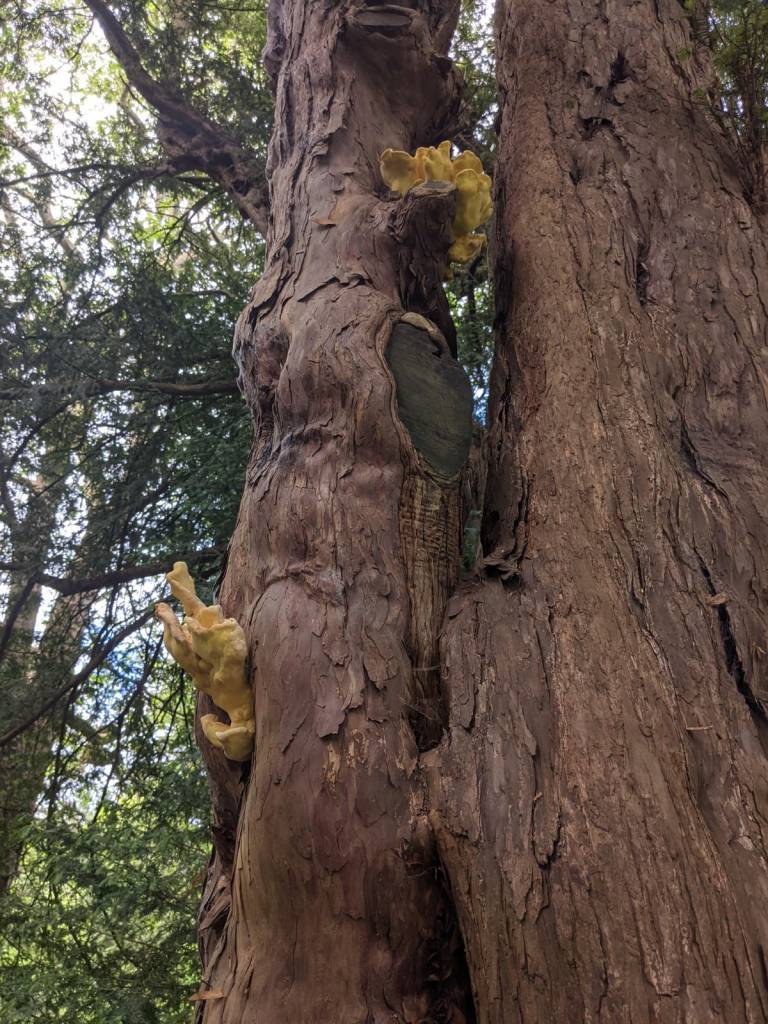
All photographs in this post taken by Katie O’Brien
Laetiporus sulphureus, so-called ‘chicken of the woods’ is an interesting fungus that grows mainly on deciduous trees; including oak, sweet chestnut and beech. It is prized by foragers. A good friend alerted me to a brilliant example on a yew tree, an outlier to the deciduous tree ‘rule’, just over a year ago (25th May 2021), a gorgeous undulating bright specimen, with some interesting glowing blue mould colonising it. A couple of weeks later I was able to visit the tree myself, in the National Botanic Gardens in Glasnevin and the Laetiporus was degraded and looking a bit shabby. I am so intrigued at what this blue mould was and what effect it’s had. Correlation does not equal causation, but what is this blue mould, what effect did it have? What’s it doing to the yew tree, is it protecting it? Colonising it for itself? Laetiporus sulphureus is known to be saprobic itself, meaning it grows on dying or dead hardwood, to know and understand the role of this mould would unlock some secrets of this fascinating interaction.


A nearby, older yew sprouts a young and prime example of Chicken of the Woods, closer off the garden’s ground. Thanks so much to Katie for the photos – it always makes me happy when friends share their fungal finds with me!



Photographs by Katie O’Brien
The National Biodiversity Data Centre for Ireland has a mere 16 records dotted around Dublin, the midlands, Donegal and Kerry. Interestingly, one of the records, the source being the British Mycological Society, recorded in 1925 in Powerscourt and another from the same dataset from 1936 in Muckross, other records are more recent from 2005 – 2021. In comparison, Cate2 recording for the UK has 3282 records of Laetiporus sulphureus, spanning most parts of the country evenly and thinning out towards the northern most part of Scotland. The records state only 28 of these were on yew, 794 on oak, 53 on prunus species, 44 on beech and 4 on hawthorn, whilst other records unfortunately don’t specify the host tree.
Basic Profile
Scientific name: Laetiporus sulphureus
Common names: Chicken of the Woods
Size of fruiting body: 30 – 120mm tall, 100 – 400mm wide
Spores: 5-7 x 3.5-4.5 µm
Gills: None – white/yellow, ovoid tubes and pores
Edibility: Prized by foragers when not too young and not too old
Lookalikes: Meripilus giganteus – paler and pores bruise black
On the Red Data List (extinct/critically endangered/endangered/vulnerable/near threatened): No
References:
Cate2 Database, managed and maintained by The Fungus Conservation Trust
National Biodiversity Data Centre
Red Data List, British Mycological Society
http://iucn.ekoo.se/, The Global Fungal Red List Initiative
Collins Complete Guide to British Mushrooms & Toadstools, Paul Sterry & Barry Hughes, 2009
Entangled Life: How Fungi Make Our Worlds, Change our Minds and Shape Our Futures, Merlin Sheldrake, 2020
Mushrooms and Toadstools of Britain and Europe, Edmund Garnweidner, 1994
Mushrooms, Patrick Hardy, 2013
The Encyclopedia of Fungi of Britain and Europe, Michael Jordan, 2004
